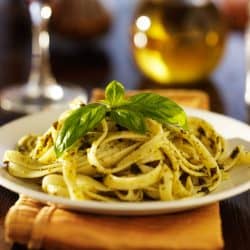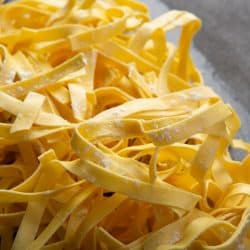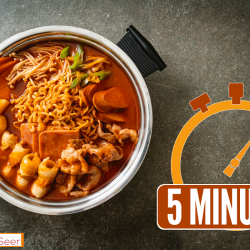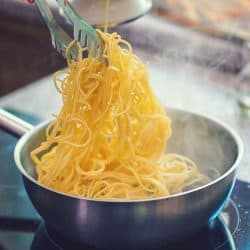Cooking pasta may seem like a straightforward process, but there is a way to make it faster, easier and safer to boil perfect noodles and safely drain the hot water. It all comes down to the pot you choose. So which pot is the best choice for cooking your favorite pasta noodles? Here you'll find all the carefully researched answers you need to make the best decision for your kitchen.
A pasta pot is a round cooking receptacle specially designed for boiling pasta noodles. It is typically made of stainless steel or aluminum and includes either a removable strainer basket or a locking, drainable lid. These features allow the cooked pasta to be easily and safely separated from the hot water.
Pasta pots come in a variety of designs and sizes for home and commercial use. Wondering which one belongs in your kitchen? Below we've discussed the features of pasta pots and how versatile they can be in the kitchen. Read on to learn more about these helpful pots, and see some of the best pots available.
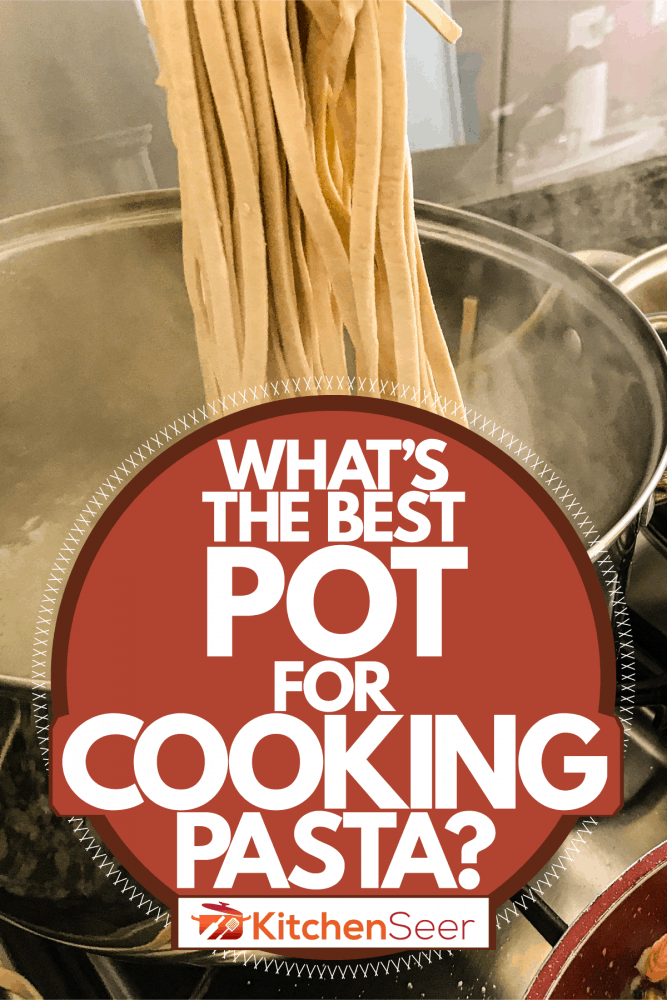
Can A Pasta Pot Help?
Anyone who has tried to drain the hot water from a pot of pasta knows it can be a hazardous undertaking. This typically involves pouring the boiled pasta into a colander, trying to avoid contact with the hot water or steam while also not losing any pasta. Pasta pots were designed to make this a breeze by incorporating the colander into the cooker, allowing for much simpler straining.
Pasta pots with strainer inserts are also perfect if you need to cook several batches of pasta in a row. Simply remove the colander and place the cooked pasta aside, then replace the insert and add another batch of dried pasta. Because you are able to remove the noodles without dumping out the hot water, you can quickly cook multiple batches of pasta using the same pot of water.
Best Pots for Cooking Pasta
All-Clad Stainless Steel Pasta Pot
This sturdy, attractive six-quart pasta cooker is also oven and broiler-safe. Customers praise it as a reliable medium-sized option that is quick to heat and easy to clean. Click here to see it on Amazon.
Gotham Pasta Pot With Strainer Lid
This five-quart pasta pot offers great versatility. It is safe in your dishwasher, has a non-stick titanium and ceramic coating, and can be used for countless dishes besides pasta. Click here to see it on Amazon.
Cooks Pasta Steamer Multipot
Up to 12 quarts of water can be boiled in this stockpot, which includes a large pasta strainer insert as well as a steaming basket. Customer praise the heavy duty design and compatibility with induction ranges. Click here to see it on Amazon.
Rorence Stockpot With Strainer Lid
Silicone handles stay cool as this six-quart stockpot boils water. Straining holes built into the lid easily and safely drain hot liquid while keeping your food locked inside. Click here to see it on Amazon.
Does A Pasta Pot Need An Insert?
An insert - though very common - is not a necessary component of a pasta pot. These cookers often come with strainer inserts, which allow the cooked pasta to be easily separated and removed from the water. These baskets are perfectly sized to fit snugly inside the cooker. Holes in the side and bottom allow liquid to drain from the strainer as it is lifted, letting you avoid any contact with the hot water.
The Calphalon Stainless Steel Multi-Pot shows a clear example of the strainer insert you may find in a typical pasta pot.
Click on this link to view it on Amazon.
An alternative to an insert is a locking, drainable lid. This allows the cooker to be tipped over the sink and the hot water drained without any risk of losing the pasta. This can be convenient as it keeps the pasta while removing the water, allowing you to continue preparing that pot of cooked pasta as desired.
Click here to see Tramontina's pasta pot with strainer lid on Amazon.
A potential downside of this method is that you may be limited to smaller batches of pasta, as these pots are designed to be small and light enough to pick up and tip over the sink. However, they may be the perfect solution for someone who has less kitchen space or doesn't need to make large amounts of pasta.
How Do You Cook Pasta In A Pot?
Regardless of how you strain the water from it, cooking pasta in a pot comes down to a few basic steps recommended by experts. You'll want to boil four to five quarts of water for a pound of pasta. Salt the water generously so the noodles will be seasoned as they are cooked. Add the dry pasta and stir until the water returns to a boil. Let it cook for about eight minutes, then check for doneness. How soft or firm you'll want your pasta is a matter of personal preference, so test it periodically until it's reached your ideal texture. Strain the pasta but don't rinse it; then, add it to the sauce or use as desired.
Just like any cook, you may wish to refine these steps the more experienced you become with cooking pasta. Learning some of the nuances of these noodles can help you get a head start on achieving that ideal level of firmness. For helpful tips on perfecting your pasta, check out this article where we answer the question, "Do Pasta And Noodles Absorb Water When Cooked?"
Can You Use A Pasta Pot As A Steamer?
Many larger pasta pot sets will include a separate steamer insert. These perforated baskets take advantage of the stockpot's size to allow convenient steaming of seafood, vegetables, tamales, and more. Wider inserts with many holes will allow more steam to reach your food and help it to cook evenly.
Click here to see Cuisinart 12-quart steamer insert on Amazon.
When choosing a steamer insert for your pasta pot, there are some important tips to keep in mind. Some steamer inserts are topped with an internal metal handle which will heat up as your food is steamed. Be sure to use an oven mitt when removing these types of steamer baskets, so you do not burn your hand on the metal. Alternatively, you may choose a steamer insert with exterior handles that won't get as hot.
Click here to see a vegetable steamer basket on Amazon.
Can You Boil Pasta In A Non-Stick Pot?
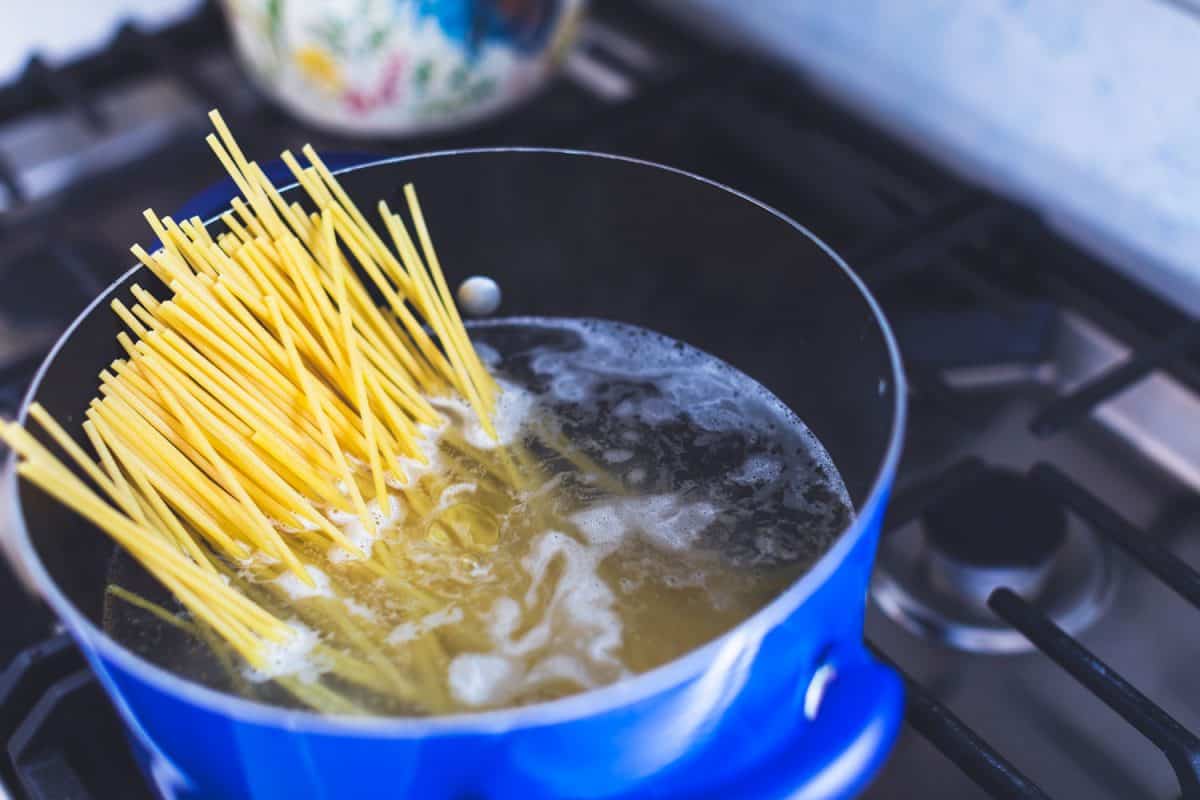
Although water can heat up slightly slower in non-stick pots, pasta can be safely boiled in cookware with non-stick coatings. However, some safety guidelines are advised when dealing with materials such as Teflon. Avoid cooking at very high temperatures as this may break down the coating, and don't use metal utensils to keep from scratching the surface. Gently hand wash your non-stick pots with non-abrasive sponges and replace the cookware if its surface is visibly deteriorating.
Non-stick cookware can be polarizing due to its relative fragility, inability to be used in the oven, and difficulty caramelizing onions. Still, non-stick pots are a safe and effective option for boiling pasta if you follow the safe cookware handling procedures advised by the manufacturer. Learn more about how to use, maintain and replace your non-stick pot in this article, where we answer the question, "When Should You Throw Away Nonstick Pans?"
Can You Cook Pasta In A Stockpot?
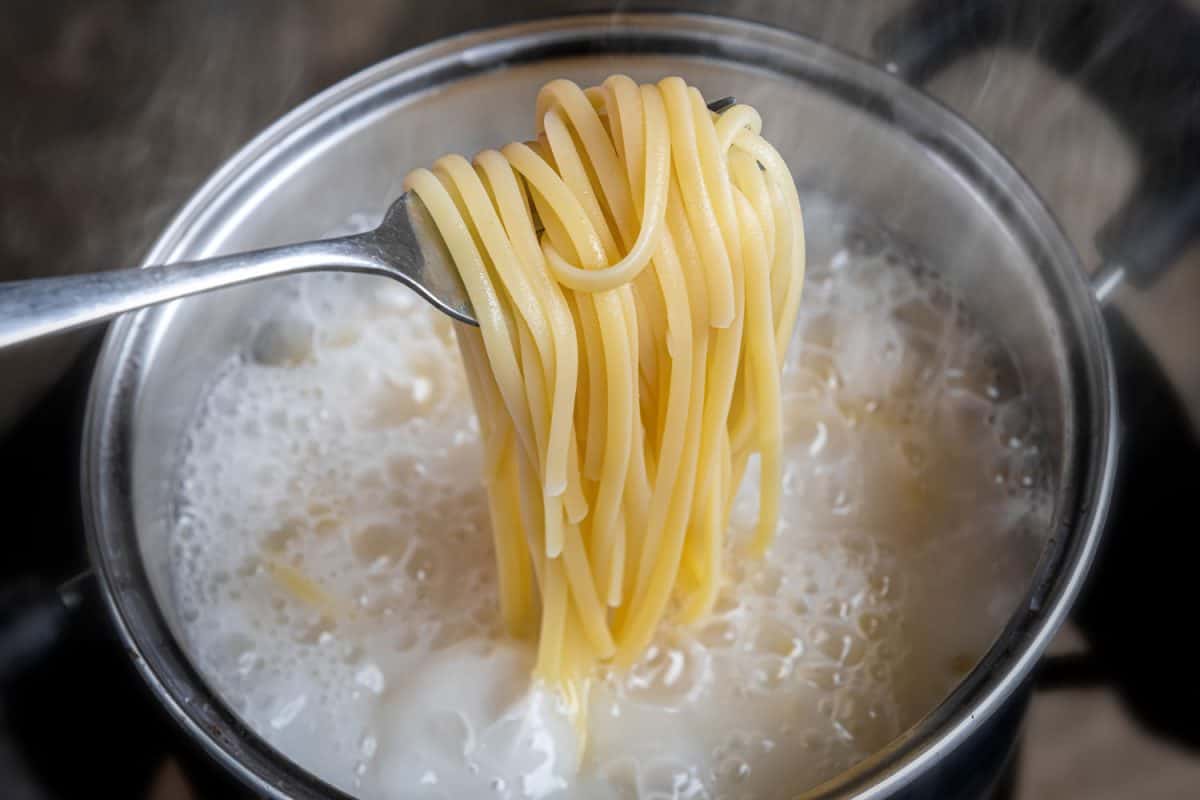
Stockpots can be excellent solutions for cooking pasta. One advantage of a stockpot is its height, which allows the water to maintain a rolling boil and keep the noodles constantly cooking at high heat. A large stockpot can also cook big batches of pasta, which will be helpful if you have a lot of mouths to feed.
There are a few pointers to bear in mind when choosing a stockpot for your pasta. Water will heat up faster in pots with thin metal bases. Stockpots can also be heavy, so choosing a lighter version can be helpful for those times you need to move the cookware off of a burner or pour out the contents into the sink.
The Takeaway
Pasta pots are designed to make your cooking easier, safer, and more efficient. You may benefit more from a lid-straining pot or a stockpot with a draining insert, depending on your kitchen's needs. Whether you are boiling a pound of penne for a small family meal or making big batches of spaghetti to feed a hungry crowd, there's a pasta pot that's right for you.










